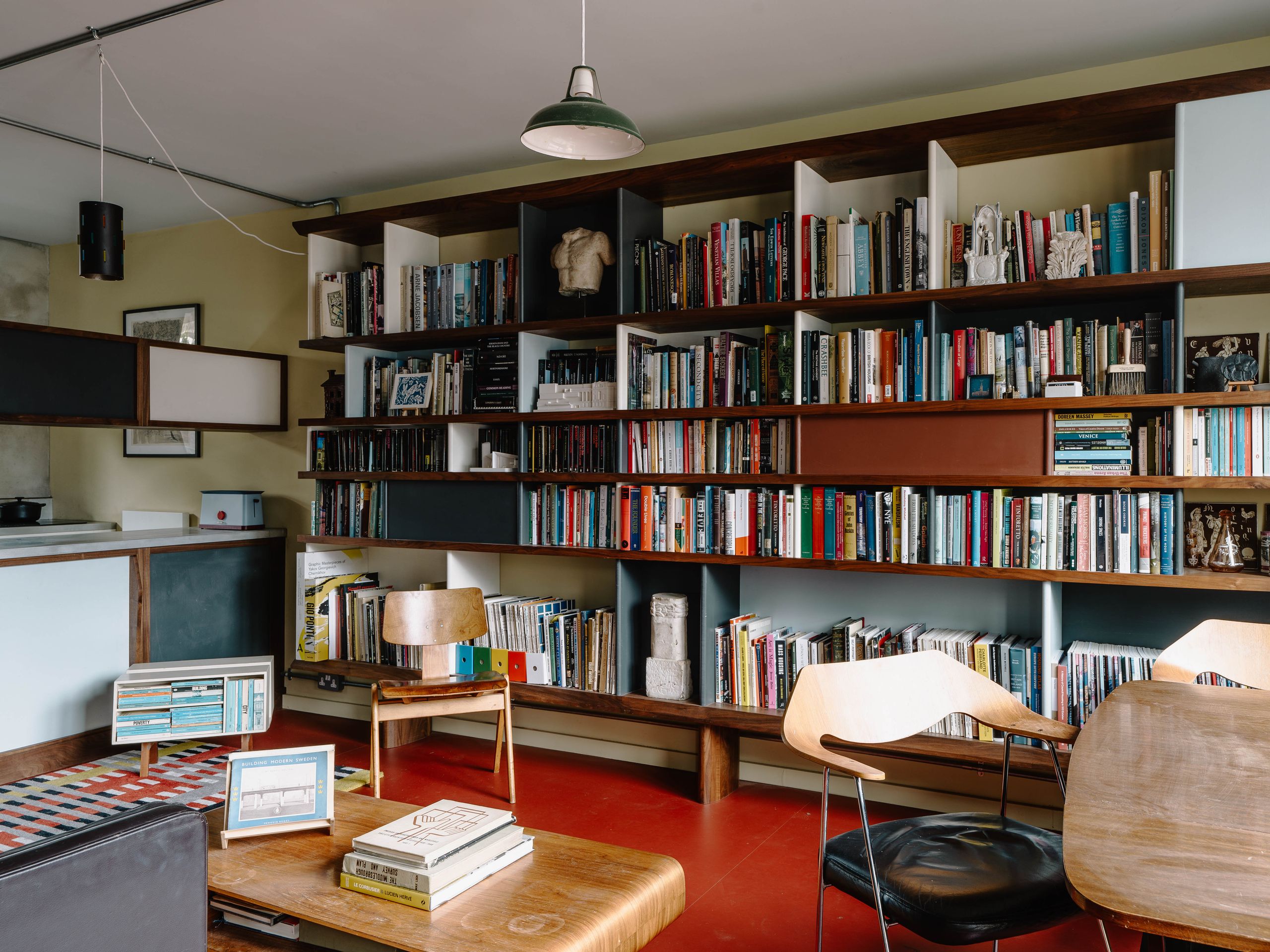The purchase of a first home is a meaningful moment for most people, but for Otto Saumarez Smith it had particular significance. As an architectural and urban historian who is currently writing a book about postwar housing, it was a chance to put academic theory into practice. The opportunity arose in 2022 when, after a peripatetic lockdown in which he moved 11 times, he found a one-bedroom flat in a large 1950s housing estate close to Regent’s Park.
Some might have been put off by the shotgun cabinet that the previous owner had installed (‘a bit much for central London’, as Otto says), or the machete they left as a parting gift. Not Otto, who is a trustee and chair of casework for the Twentieth Century Society, which campaigns for post-1918 architectural heritage. He was able to see the potential of an estate that was built along the same precepts of ‘mixed development’ housing such as Chamberlin, Powell and Bon’s Golden Lane development on the border of the City of London and Clerkenwell, where the idea was that people would move within the complex depending on their changing needs. His flat is in a ground-floor block that was intended for older residents, for example, while some of his neighbours have six bedrooms and a garden.
With the help of architect Martin Edwards, who has worked extensively on properties on the Golden Lane estate, and the interior designer and craftsman George Younge, the flat has been beautifully renovated and redesigned to live up to the Modernist ideals behind its conception in the 1950s.
The open-plan kitchen was inspired by Charlotte Perriand’s designs for the apartments in Le Corbusier’s Unité d’Habitation. ‘Some of the developments from the age of Perriand have been so comprehensively absorbed that we forget they were once radical,’ Younge says. ‘The idea of allowing a kitchen to communicate with a living room, for example, was for Perriand an emancipatory, and specifically feminist, gesture.’
Younge used handsome panels of rich-brown walnut and hand-painted birch ply for the kitchen cupboards, and aluminium for the worktops and splashbacks. He also designed and built a Perriand-style bookcase along the length of the living room wall, which carries the lines and materials from the kitchen units into the living space. It houses Otto’s library and selected objects, such as his growing collection of mid-century Wedgwood ceramics, including a Norman Makinson-designed Festival of Britain mug, one of his most cherished pieces. In the bedroom, which leads directly off the living area, Younge has made an elegant modular bookcase from walnut and aluminium, echoing the joinery elsewhere.
The easy flow of the flat comes not just from the clever layout, but also the ‘Corb colours’ that pull it all together. Edwards recommended the more subdued tones Le Corbusier used for his 1930s designs over his brighter 1950s palette, so the flat is painted throughout in rusty reds, graphite greys, arsenic greens and pollen yellows; colours that are picked up on the cabinetry as well as with the red linoleum underfoot. The floor is one of Otto’s favourite things about his flat – on a recent stay at the Bauhaus at Dessau, he noted it there too.
Mid-century furniture completes the flat’s sense of unity. Guarding the entrance are what Otto thinks of as ‘Modernist versions of lion sculptures’ – two concrete bench ends designed for the Festival of Britain. In the living room, an Isokon ‘Penguin Donkey Mark II’, filled with the 1960s Pelican paperbacks for which it was designed, sits on a graphic Anni Albers rug. A John and Slyvia Reid lamp hangs from the ceiling, while a dressing table and chest of drawers designed by the pair for Stag can be found in the bedroom.
‘I had such fun with the furniture,’ says Otto, who evidently has a talent for canny sourcing. He managed to find a 1955 G-Plan dropleaf dining table for £20 and a set of four Robin Day ‘675; dining chairs at a charity shop. He also picked up a chair designed by Day in 1963 for the dining hall of Churchill College, Cambridge, for £10 that was being thrown out by the college. It is, he freely admits, ‘fiercely uncomfortable’.
Otto’s own translation of Modernist aesthetics into reality has been infinitely more satisfactory. The experience of living in a postwar estate has only deepened his long-standing interest in the period. Quite simply, he says, ‘I love living here.’ What better proof of architectural success can there be?
For more information on George Younge, visit: georgeyounge.com
Sign up for our weekly newsletter, and be the first to receive exclusive stories like this one, direct to your inbox
